Understanding Naloxone: What Happens If You Use It on Someone Who Isn’t Overdosing & Choosing Between Nasal Spray and Intramuscular Injection
Share
Naloxone: A Life-Saving Medication with No Harmful Effects
Naloxone is a powerful opioid antagonist that reverses opioid overdoses by rapidly blocking opioid receptors in the brain. Its effectiveness has saved hundreds of thousands of lives, but many people hesitate to administer naloxone because they worry about potential harm if given to the wrong person.
A common concern is: What happens if someone receives naloxone but isn’t actually overdosing? Fortunately, naloxone is extremely safe and does not negatively affect individuals who are not experiencing an opioid overdose.
Additionally, there are two main methods of naloxone administration—nasal spray and intramuscular (I/M) injection—and knowing the differences can help individuals choose the best option for their needs.
This guide will break down:
● What happens if naloxone is given to someone not experiencing an overdose
● The difference between naloxone nasal spray and intramuscular injection
● Which method is better suited for different situations
What Happens If Naloxone Is Given to Someone Who Isn't Overdosing?
Naloxone only affects people with opioids in their system. If a person is not experiencing an opioid overdose, naloxone will have no effect whatsoever.
Naloxone Does Not Affect Non-Opioid Overdoses
If someone is experiencing an emergency caused by alcohol poisoning, benzodiazepines (Xanax, Valium), stimulants (cocaine, methamphetamine), or other substances, naloxone will not harm them—but it also won’t reverse their condition.
Naloxone Does Not Cause Euphoria or Dependence
Naloxone has no addictive properties and does not produce a high. It cannot be misused and has no effect on individuals who are not taking opioids.
Naloxone and Accidental Administration
If naloxone is mistakenly administered to someone who does not need it:
● They will not experience any negative side effects.
● The medication will simply be processed by the body with no impact on brain function.
● The only downside is using a dose unnecessarily, which could be needed for a future emergency.
Given its incredible safety profile, experts recommend administering naloxone even if an opioid overdose is only suspected. If an individual is unresponsive and their condition is unclear, it is always better to administer naloxone than to do nothing.
Naloxone Nasal Spray vs. Intramuscular Injection: What’s the Difference?
There are two main ways to administer naloxone:
- Nasal spray (Narcan®, Kloxxado®, generic naloxone)
- Intramuscular (I/M) injection (vial and syringe or auto-injector)
Both methods work effectively to reverse opioid overdoses, but each has advantages and drawbacks depending on the situation.
Naloxone Nasal Spray
How It Works:
● The prefilled device is placed inside the person’s nostril.
● One dose is sprayed, allowing the medication to absorb through nasal tissues into the bloodstream.
● If the individual does not respond within 2-3 minutes, a second dose may be administered in the other nostril.
Pros of Naloxone Nasal Spray:
✔ Easy to use – No medical training required.
✔ Pre-measured dose – Reduces the risk of under- or overdosing.
✔ No needles – Safer for public use, avoiding accidental needlestick injuries.
✔ Widely available – Many pharmacies and harm reduction programs provide free naloxone nasal spray kits.
Cons of Naloxone Nasal Spray:
✖ Less effective if the person has nasal obstructions – If the person has nasal trauma, excessive mucus, or other blockages, absorption may be reduced.
✖ Limited to specific dosages – Most nasal sprays come in 4 mg (Narcan®) or 8 mg (Kloxxado®), which may not be enough for fentanyl-related overdoses.
Intramuscular (I/M) Naloxone Injection
How It Works:
● A dose of naloxone is drawn from a vial and injected into the muscle (thigh, upper arm, or buttock) using a syringe.
● Some products, like Evzio® auto-injectors, deliver a pre-measured dose automatically.
Pros of Intramuscular Injection:
✔ More precise dosing – Can be adjusted depending on the individual’s needs.
✔ Works even if nasal passages are blocked – Effective in all overdose cases.
✔ Lower cost – Vial and syringe kits are often cheaper than prefilled nasal sprays.
✔ More available in medical settings – Used by paramedics, hospitals, and harm reduction workers.
Cons of Intramuscular Injection:
✖ Requires basic training / bystanders may be uncomfortable with needles – Must be injected correctly for full effectiveness.
Which Naloxone Delivery Method Is Best?
For Individuals, Families, and Public Use:
Nasal spray is the best option because it is:
✔ User-friendly – No medical experience required.
✔ Needle-free – Reduces safety risks.
✔ Fast-acting – Works quickly in emergencies.
For most bystanders, caregivers, and community responders, naloxone nasal spray is the easiest and most effective choice.
For First Responders and Medical Professionals:
Intramuscular injection may be preferred because:
✔ It allows for precise dosing in medical settings.
✔ It remains effective even if nasal administration is not possible.
✔ Multiple doses can be drawn from a single vial, making it more cost-effective in large-scale use.
While nasal spray is the most accessible option for the general public, medical personnel and harm reduction teams may prefer intramuscular injection for greater dosing control.
Final Thoughts: Naloxone Is Safe, Effective, and Easy to Use
Naloxone is an essential tool in preventing opioid overdose deaths, and its safety profile makes it ideal for widespread public use.
Key Takeaways:
● If naloxone is given to someone who is not overdosing, it will not harm them.
● Naloxone only affects opioid-related overdoses—it does not work on alcohol poisoning, benzodiazepine overdoses, or stimulant overdoses.
● Naloxone nasal spray is the easiest option for most people, while intramuscular injection offers dosing flexibility in medical settings.
● Both methods work quickly to reverse overdoses, and it is always better to administer naloxone than to hesitate.
By carrying naloxone, learning how to use it, and educating others, we can take an active role in saving lives and preventing overdose deaths.
Choose the right naloxone format for your needs and ensure it is stored in a protective case, so it’s ready when needed most.


